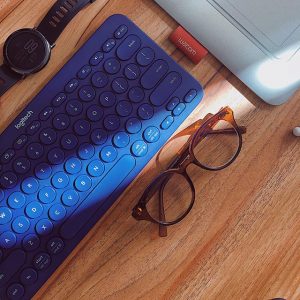Over the last 20 years, the rate of myopia has exploded.
According to Ophthalmology (Feb 2016), as much as 50 percent of the world population will by myopic by the year 2050.
Myopia, also known as nearsightedness or shortsightedness, is a condition in which distance vision is blurry, and eyeglasses or contact lenses are required.
Myopia occurs when incoming light is focused in front of the retina, instead of directly on it, causing blurry vision.
Myopia is a common condition that typically begins in childhood and often progresses into a person’s late teens or early 20s. Myopia in childhood significantly increases the risk of developing sight-threatening eye diseases later in life.
What is the myopia explosion?
The “myopia explosion” refers to the alarming rate at which myopia seems to be increasing in prevalence worldwide, over the last few decades.
In the United States, myopia has a prevalence of 42 percent, which is nearly double what it was three decades ago.
A study published in Ophthalmology (May 2016) reports that 30% of the world population is currently myopic, and within our lifetime as many as 5 billion people will be affected by myopia.
In Asia, where the epidemic is strongest, the prevalence of myopia is as high as 90%.
These numbers are alarming, as myopia has been linked to a higher risk of sight-threatening eye conditions in the future.
Myopia risk factors
While myopia is a condition that often runs in families, there are also environmental factors that increase the chances of myopia development and progression.
1. Increased time indoors
One factor that has been reported in many studies, including in Investigative Ophthalmology and Visual Science (Feb 2019), is the link between myopia and inadequate time spent playing outdoors.
Kids these days spend significantly less time outdoors than their parents and grandparents did as children. The above study shows that children who spend a certain amount of time playing outside each week, have a lower chance of myopia and myopia progression than children who spend little time outside.
Some experts theorize that the higher levels of sunlight outdoors stimulate the production of the chemical dopamine in the body, and specifically in the retina, protecting against the development of conditions such as myopia.
In another study in Investigative Ophthalmology and Visual Science (Sept 2020), it is suggested that the visual complexity of outdoor spaces, as opposed to the uniformity and plain features of indoor spaces, might also be to blame.
Researchers say this may explain why myopia is more prevalent in urban areas, where open spaces are often at a premium.
2. Screen time
Another important factor in the myopia explosion is the significant increase in the amount of time spent in front of screens, or doing other near work activities.
This generation has seen the rise of smartphones and tablets, streaming services that offer binge-worthy television at your fingertips, video calling, virtual classrooms and much more.
Especially now, during the COVID-19 pandemic, many children wake-up, get on a screen for all-day schooling, finish the school day, go on their tablet to finish their homework, and then move to the television for entertainment until bed.
This factor above significantly increases a child’s chances of developing myopia.
The British Journal of Ophthalmology (Feb, 2019) reported that children that had access to screens for more than three hours each day were up to four times more likely to develop myopia than those that spent an hour or less per day on screens.
This effect tended to depend on the age and stage of development of the child. Children 6 to 7 years old who used screens heavily were actually five times more likely than their peers of the same age to develop myopia. That increase was much milder in 12- to 13-years-olds, where heavy screen use increased the incidence of myopia by 21%.
Multiple studies have also confirmed that an increase in other close work activities such as reading and writing, in combination with reduced outdoor time, can have a negative effect on myopia development and progression.
SEE RELATED: The Benefits of Outdoor Play for Children with Myopia
If your child has myopia, see an eye doctor near you to discuss the best options.
What can you do to help your child?
Considering all of these factors, what can you do to help your child reduce their risk of myopia development or progression?
One thing you can do is get them outside more. This is an easy step that will give them more time to play in the sun and get them away from their screens, books and homework for a bit.
Researchers from the National Eye Institute found that just 14 hours a week, or two hours per day outside can significantly reduce your child’s chances of needing glasses for myopia.
According to the study, children with two myopic parents who spent less time outdoors had a 60 percent chance of needing glasses to correct their myopia. The same children’s risk of myopia dropped to around 20 percent, after spending around 14 hours per week outside.
Another important step you can take is scheduling an appointment with your child’s eye doctor to discuss myopia management.
What is myopia management?
Myopia management is an area of eye care to slow the progression of myopia in children and lower their risk of developing sight-threatening diseases in the future.
There are a number of ways your eye doctor may accomplish this:
LEARN MORE: Guide to Pediatric Eye Conditions
Schedule an appointment with an eye doctor if you are concerned about your child’s myopia.
The “myopia explosion” refers to the alarming rate at which myopia has been increasing in prevalence worldwide.
In the United States, myopia has doubled from 20% to over 40% of the population in under three decades.









